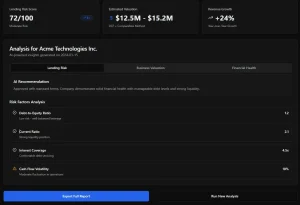Financial management is essential to business success. It involves planning, organizing, and controlling finances to meet short-term and long-term goals.
Management of finances may seem complex and challenging, but it doesn’t need to be. By following these three tips you’ll learn how to effectively handle your money: 1. Create a Budget
1. Make a Budget
Budgeting is a vital element of financial management. It helps you assess your finances, track spending and set goals that reflect your priorities.
Start by totaling up your monthly income, such as salaries, bonuses and additional sources like tax refunds or side work. Next, list all expenses; these could be fixed expenses like rent/mortgage payments and utility bills as well as variable costs like groceries, dining out or entertainment costs.
Estimate the amount of each expense by reviewing past credit card and bank statements or creating separate columns in your spreadsheet to better track each type of expense incurred; don’t forget recurring charges like quarterly or annual subscriptions that might arise!
2. Set Goals
Financial goals should be specific, measurable, attainable, realistic and timely in nature. To be truly effective at financial management planning and investment decisions.
As part of your financial goals, take an inventory of your current spending habits. Consider trimming back discretionary expenses like eating out and entertainment by $200/month, for instance.
Set short- and long-term financial goals. For instance, perhaps your aim is to save a set amount, pay off debt or purchase your first home.
Make a commitment to review and adjust as necessary throughout each quarter in order to reach your yearly financial goals. This will keep you on the path toward reaching them more successfully.
3. Track Your Expenses
Accurate spending tracking is key to optimizing the use of your company’s funds, helping you optimize budgets, maximize tax deductions and manage cash flow effectively while preventing a chaotic year-end close process.
To accurately keep track of your expenses, start by collecting credit card statements, housing and utility bills, bank statements (including ATM withdrawals ) and electronic payment records. Next use either an app, spreadsheet or pen and paper to organize expenditures into categories of needs, wants and savings/debt.
Create a realistic savings goal in order to prevent overspending, such as saving enough for three to six months of expenses as recommended by experts. Saving this way may take some time but is key in building a sound financial plan.
4. Create a Balance Sheet
An effective balance sheet is key to maintaining business health and long-term profitability. Aim to keep assets high while liabilities low – an experienced accountant can assist with this by offering advice about maintaining adequate working capital levels without incurring excessive debt levels.
Step 1: From your trial balance, identify accounts that represent what you own-e.g. cash and inventory-and list them on the left side of your balance sheet. Depending on their age and category they can further be divided into current or noncurrent assets.
Once again, use your trial balance to identify accounts that represent what you owe–that is, liabilities such as accounts payable and accrued payroll taxes–then list them on the right side of your balance sheet.
5. Pay Your Bills on Time
Establishing the habit of paying bills on time is an integral component of financial success. Doing so helps build your credit score, lower stress levels and may save money on future expenses.
Keep a bill payment calendar or checklist handy, and set a goal to pay all bills as soon as you receive them each month. Doing this will prevent late fees or interest charges for late payments from accruing.
If you have multiple bill due dates, consolidate them to one date by reaching out to creditors and asking them to change the date you’re charged; this change should take place over multiple billing cycles.







More Stories
Automating Financial Workflows: Your Ticket to Freedom as a Freelancer
Accounting Software Customization for Niche Industries: Why One Size Doesn’t Fit All
Investing in Socially Responsible Funds and Green Initiatives